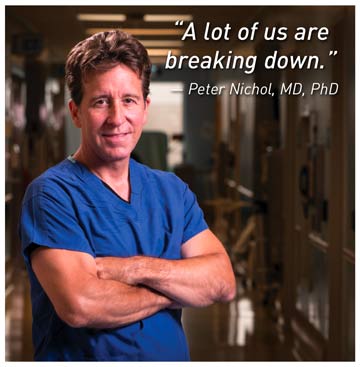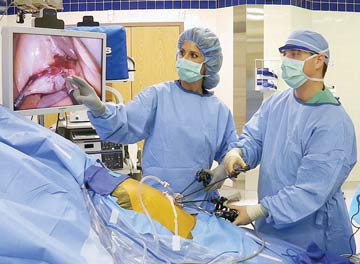Kenneth Levin, MD, was performing his fourth big abdominal case of the day when his neck and back suddenly froze. "The PA looked at me, and I looked at her, and she knew instantly I was in big trouble," he recalls. "I had a whole roomful of people watching me just standing there, paralyzed."
After a couple minutes, Dr. Levin regained some mobility and finished the case. Retirement entered his mind. "But I didn't want to do that," he says. "I loved operating. I was good at it, and things had been going so well. So I pushed myself." Less than a year later, though, he reluctantly performed his final surgery. "It was difficult," he recalls. "I thought I was at my prime, and it turned out my body couldn't keep up."
Dr. Levin practiced general and colorectal surgery in Madison, Wis., from 1991 until 2013, when, in his mid-fifties, he performed that last case. Like many surgeons his age, he wasn't educated about the detrimental health effects surgery could bring. Still, he was always keen to stay fit. "I did a lot of core exercises every day, and my lower back is perfect," he says. "But I never even considered [an injury to] the neck until all of a sudden, there it was."
He then paid more attention to table positioning, tried to avoid prolonged awkward positions, operated more slowly when possible and took microbreaks to stretch or pause. Although often "any extra time seemed a luxury, so you just pushed through [the pain]," he says. "It seemed like in order to keep your income relatively steady as time went on, you had to do more and more cases."
In 2004, Dr. Levin developed two herniated discs in his neck from degenerative overuse. He blames it on the rigors of operating. "The twisting and bending and contorting, trying to see things in the pelvis, caused a lot of strain and abuse on my spine," he says.
.svg?sfvrsn=be606e78_3)


.svg?sfvrsn=56b2f850_5)